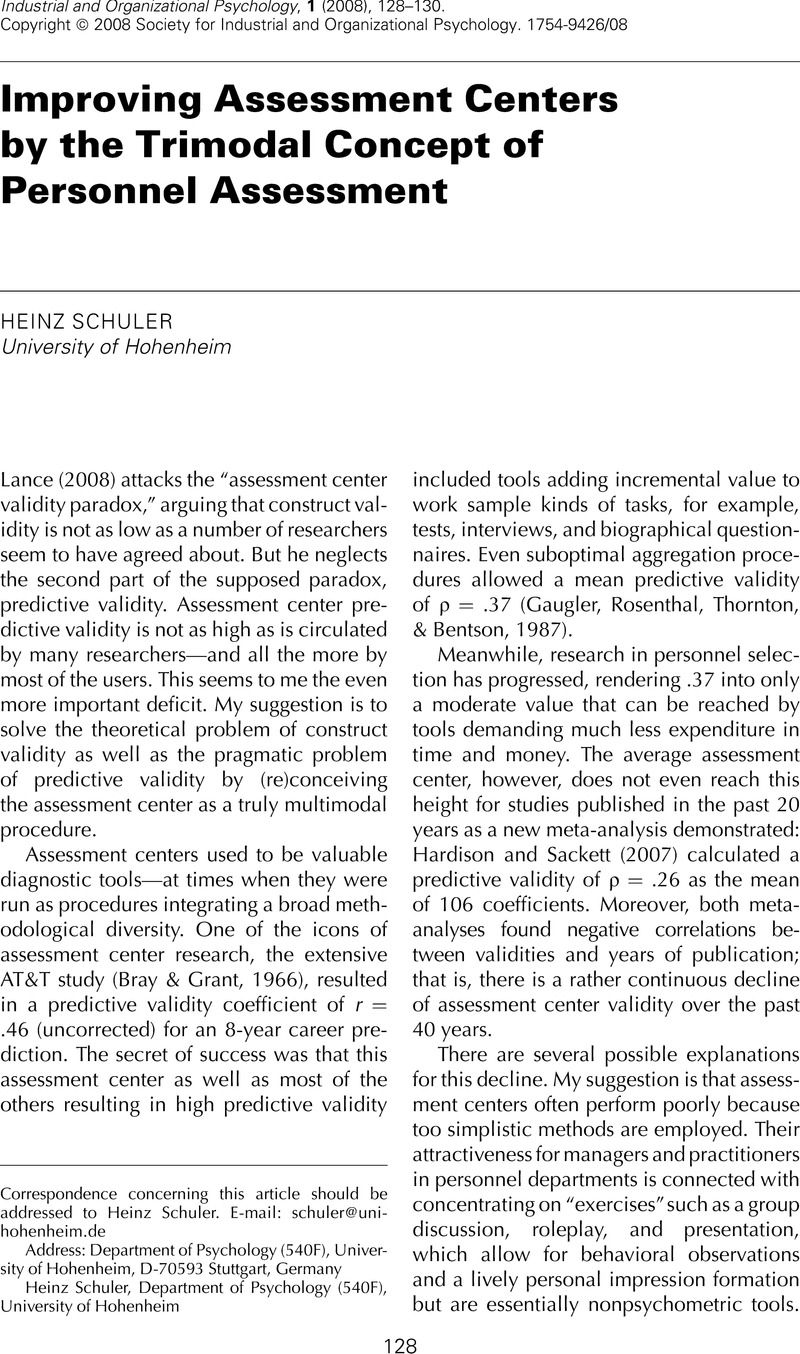Crossref Citations
This article has been cited by the following publications. This list is generated based on data provided by Crossref.
Lance, Charles E.
2008.
Where Have We Been, How Did We Get There, and Where Shall We Go?.
Industrial and Organizational Psychology,
Vol. 1,
Issue. 1,
p.
140.
Rieser, Marcel
and
Wollersheim, Jutta
2011.
Forum Mergers & Acquisitions 2011.
p.
225.
Forsblom, Lara
Negrini, Lucio
Gurtner, Jean-Luc
and
Schumann, Stephan
2016.
Dropouts in Swiss vocational education and the effect of training companies’ trainee selection methods.
Journal of Vocational Education & Training,
Vol. 68,
Issue. 4,
p.
399.
2016.
Personnel Selection.
p.
319.
Nador, Jeffrey D.
Vomland, Michael
Thielgen, Markus M.
and
Ramon, Meike
2022.
Face recognition in police officers: Who fits the bill?.
Forensic Science International: Reports,
Vol. 5,
Issue. ,
p.
100267.
Rudnev, Evgeny
2022.
Between the assessment centre and reality: how and why biographical psychology makes human resource management more effective.
European Journal of Management and Business Economics,
Vol. 31,
Issue. 2,
p.
210.





